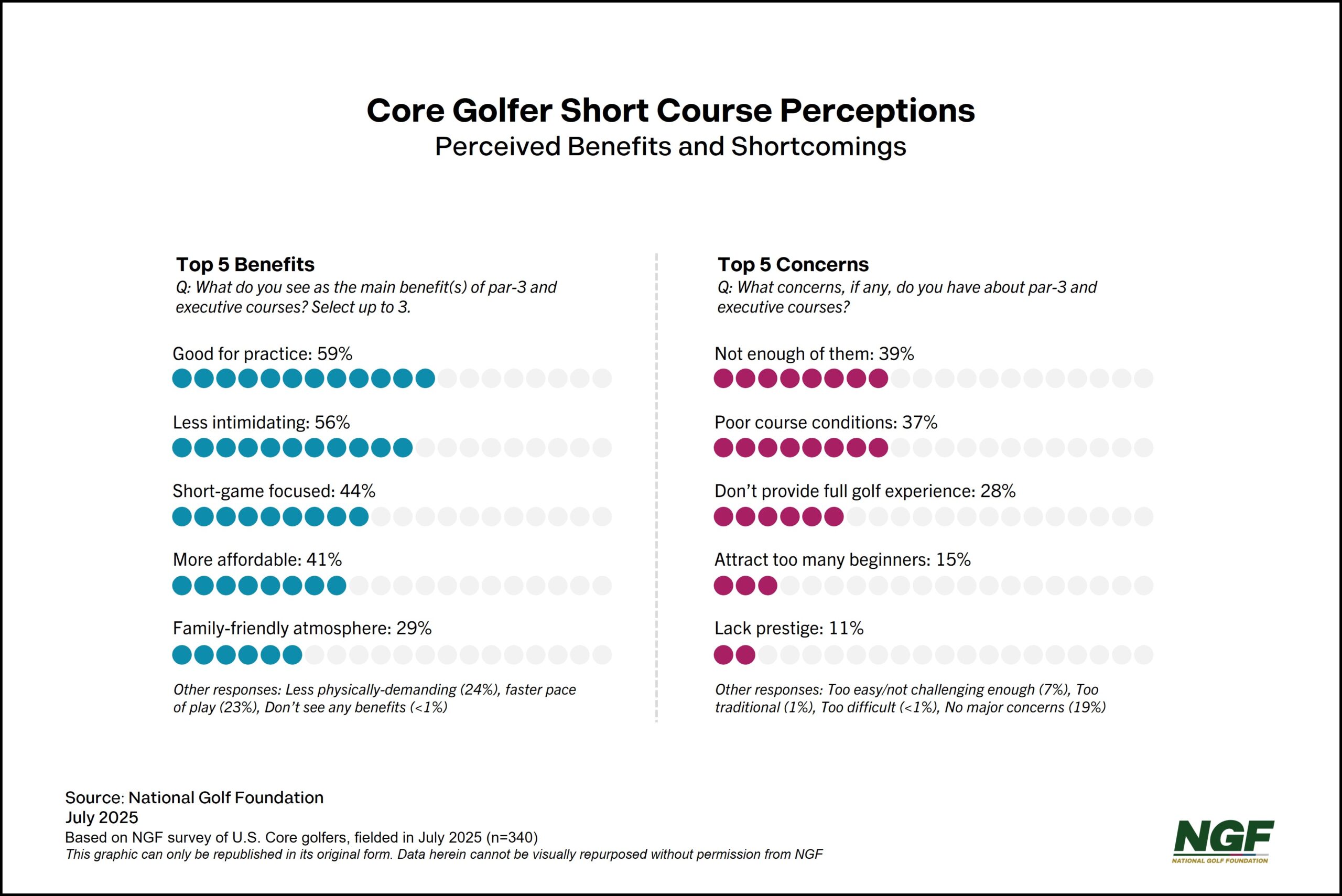Think about a Par 3 or “Executive” Short Course you’ve played. What do you picture?
You might visualize an energy-filled spot like The Cradle at the Pinehurst Resort and its vibrant social scene with drinks, music, and barefoot camaraderie. You might also envision a rough-around-the-edges pitch-and-putt long overdue for investment and upgrades but filled with childhood memories of learning to swing a club.
Golfers’ perceptions of Short Courses are crucial to understanding the space and their place – and untapped opportunity – within the golf landscape.
Our recent survey on the perceptions of Core golfers (8+ rounds played annually) reveals some stark contradictions while emphasizing the importance of some Short Courses as transitional golf facilities – those that can convert beginners to lifelong golf consumers.
Generally, Core golfers have a positive attitude about short courses. Yet this is where our first contradiction starts.
Despite positive overall sentiment, fewer than 10% think Short Courses are designed for experienced golfers like them, with the majority instead looking at the format as being more geared toward beginners, juniors and families. While 8 out of 10 Core golfers say they play short courses occasionally, 14% actively avoid them altogether. It’s a reminder that for a niche category, short courses come in a wide variety of sizes and types that shape perceptions dramatically.
We find another contradiction in the most common concerns Core golfers have about short courses.
The biggest problem they note is that there aren’t enough Short Courses — Par 3 courses make up just under 5% of U.S. supply, for example — and yet second and third on the list of concerns are poor course conditions and the belief that these venues don’t provide a full golf experience. Even if there was a Short Course on every corner, it’s unlikely Core Golfers would really want to visit places they believe have poor conditions or provide a lesser experience.

So, what should a Short Course aim to be?
Certainly, there are many correct answers to this question, though one interesting finding is that golfers are almost evenly split whether Short Courses should be golf-focused or experience-focused. Approximately three-quarters of Core golfers feel short courses are casual in nature and over half of them believe the main benefit is that they are less intimidating.
In other words, the Short Course benefits perceived by Core golfers are more closely aligned with the needs of beginners, juniors, families, and other groups that may fall outside the typical “golfer” definition. Perhaps some courses should consider positioning themselves as a beacon for these groups to cast a wider and welcoming customer net.
Short courses have ample options when deciding on their target audience(s), and experienced golfers may feel positive enough about them to keep these places relevant, or even beloved. Indeed, recent Short Course development, and redevelopment, is evidence of this. But for some, further leaning in with groups that fall outside the experienced golfer category may expand what these types of facilities can represent in the golf ecosystem and change what comes to mind when we think about short courses.
Read more in this series:
Golf’s ‘Real’ Short Course Movement Awaits
Can Short-Form Golf Transform Female Retention?
More for members:
Short Course Supply Update



